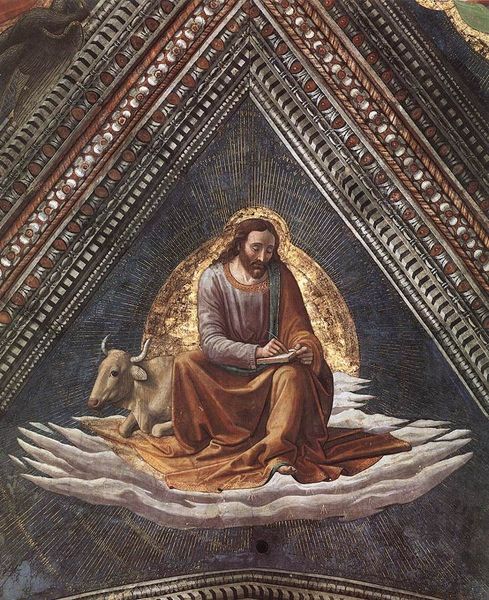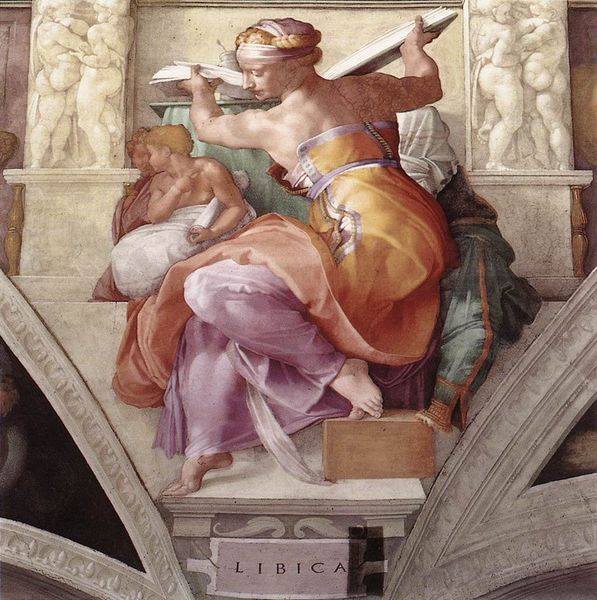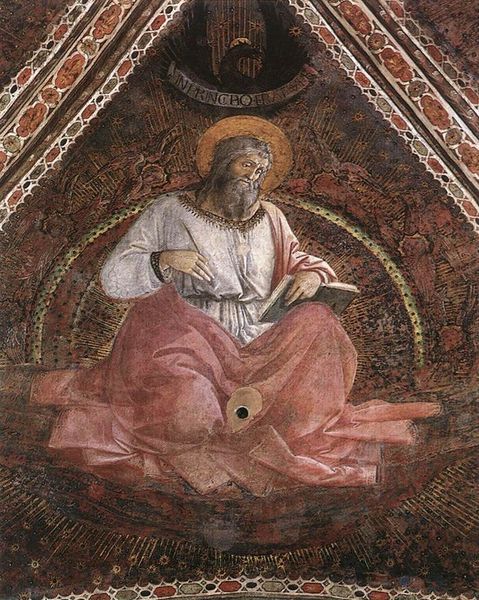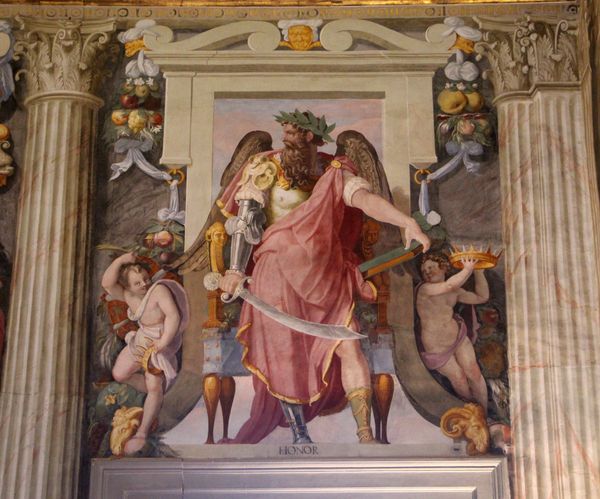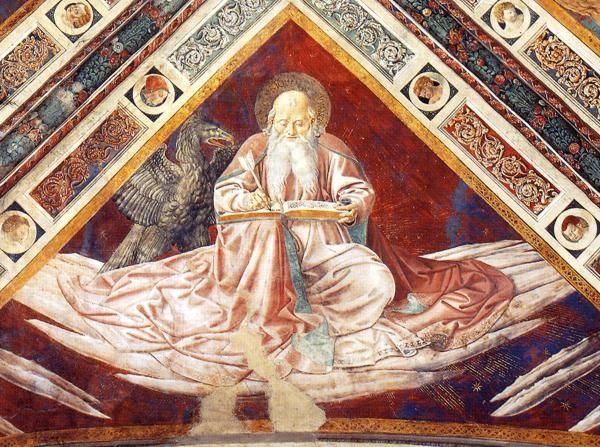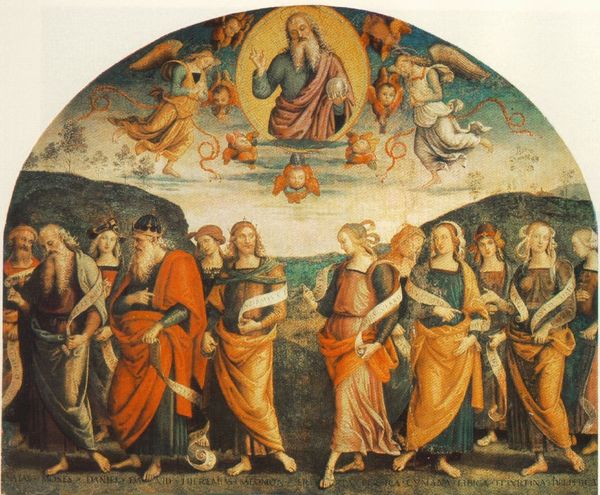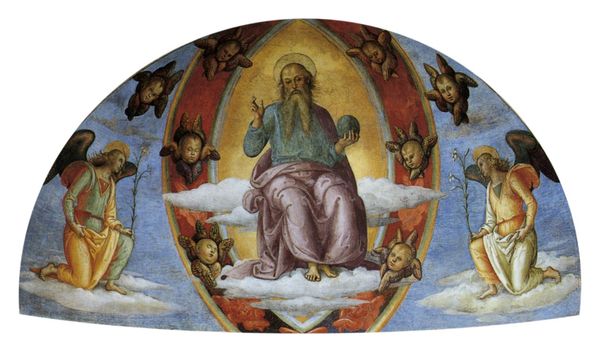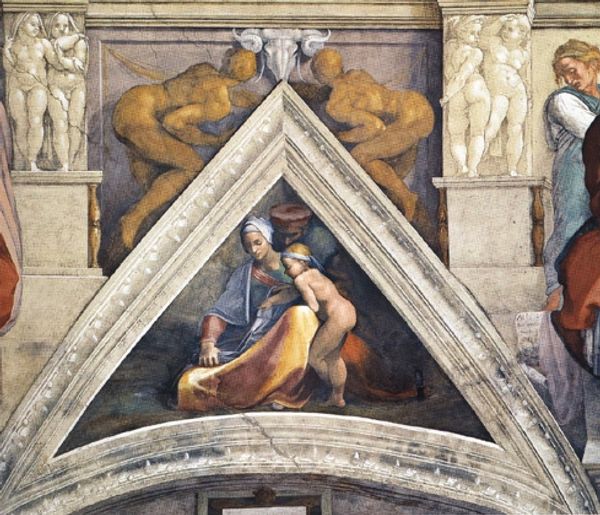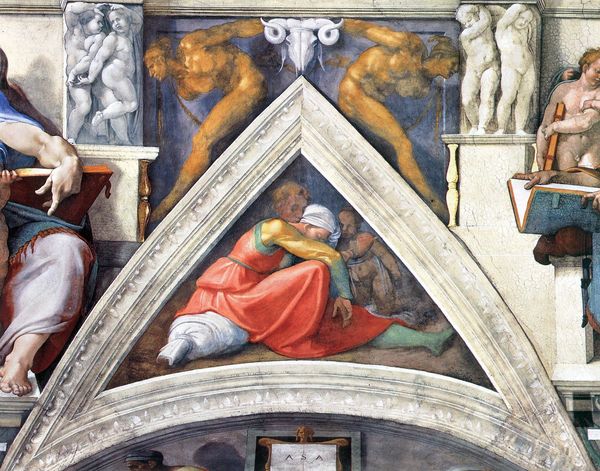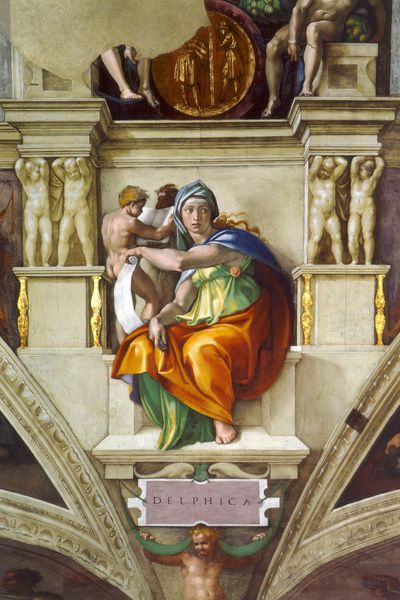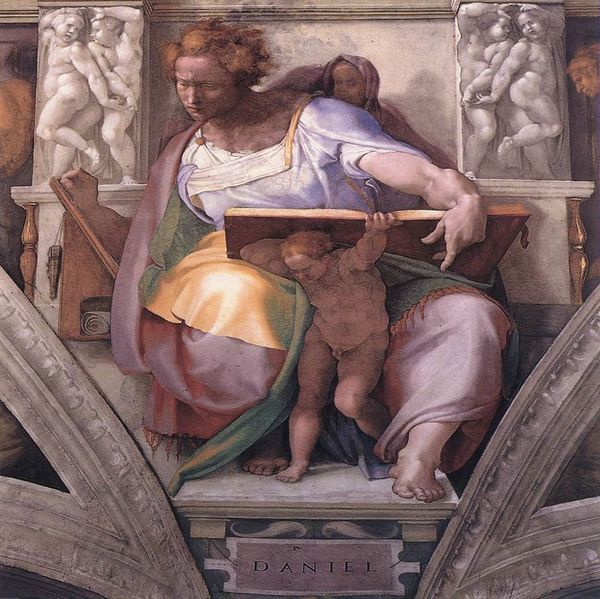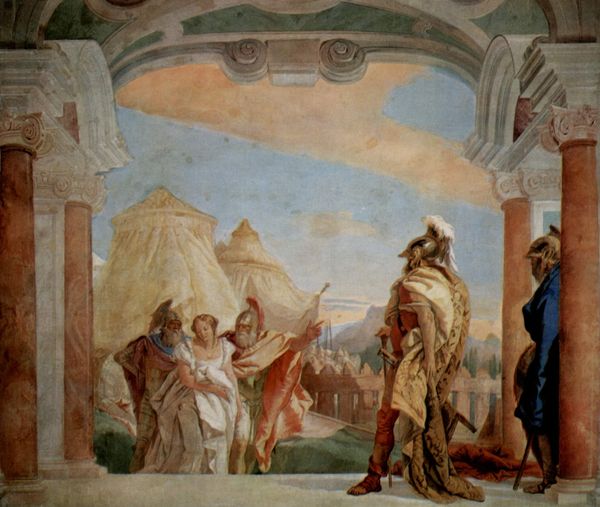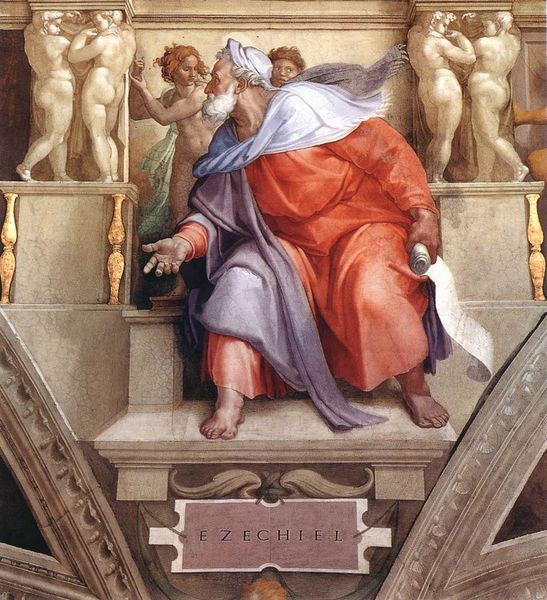
fresco
#
figuration
#
fresco
#
christianity
#
history-painting
#
italian-renaissance
Copyright: Public domain
Editor: This is Domenico Ghirlandaio's fresco of *St. John the Evangelist* from around 1490, found in Santa Maria Novella in Florence. I find the way the figure is situated within this ornate triangle kind of intriguing. What do you make of this piece? Curator: Well, first notice how St. John is accompanied by the eagle – his traditional symbol. The eagle, believed to be able to stare directly into the sun, represents the soaring, spiritual insight found in John's Gospel. Doesn't it almost look like the Saint's familiar is whispering divine inspiration into his ear? Editor: It does, now that you mention it! But why an eagle specifically? Curator: Think of John's writing – philosophical, even mystical at times. The eagle reflects this higher-level thinking. Other Evangelists have their own symbols too; each connected to a particular attribute. Editor: So it's not just decoration; these animals are basically visual shorthand for the character of each Evangelist? Curator: Precisely! Renaissance art is filled with these meaningful symbols; each image carefully selected to convey deeper truths. In addition to his gospel, John wrote Revelation and the eagles symbolizes this man of vision, who predicted end times. It offers insight to Renaissance ideas around destiny. Editor: That makes me appreciate it much more. Now I will keep an eye out for how Renaissance artists would portray each Evangelist using associated animals. Curator: Symbols are rarely arbitrary in art; they are intentional and packed with layers of meaning! It’s so rewarding to decipher what those layers might reveal to us.
Comments
No comments
Be the first to comment and join the conversation on the ultimate creative platform.
